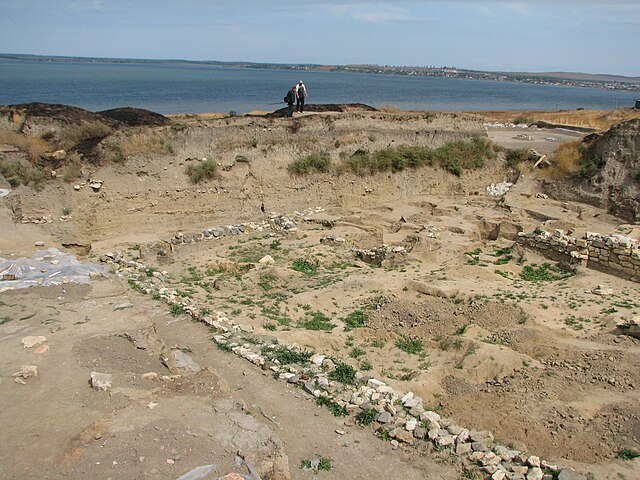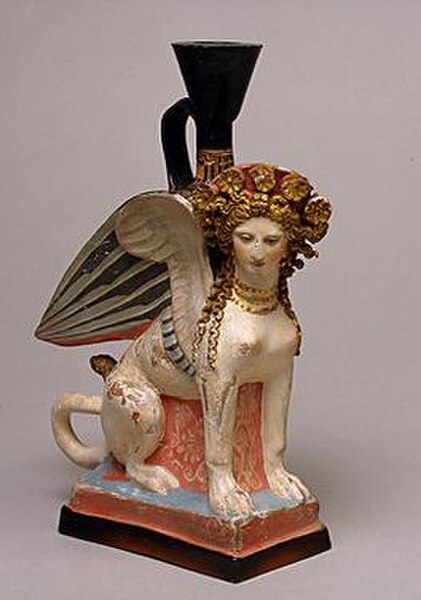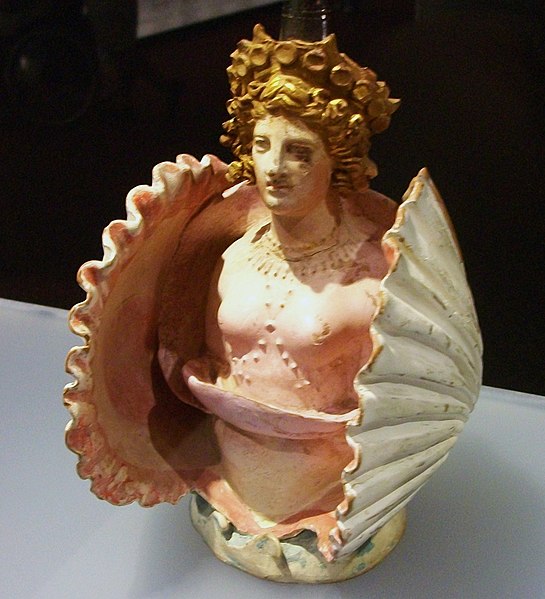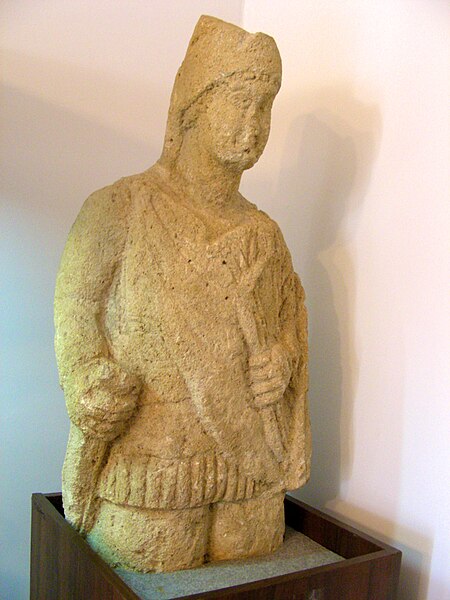Phanagoria
Videos
Page
Phanagoria was the largest ancient Greek city on the Taman peninsula, spread over two plateaus along the eastern shore of the Cimmerian Bosporus.

The remains of Phanagoria

A terracotta vessel in the shape of a sphinx, 5th century BC. One of 26 similar pieces discovered in a feminine necropolis ("Demeter's priestess") near Phanagoria. On exhibit at the Hermitage Museum in St. Petersburg.

Pottery vessel in the shape of Aphrodite inside a shell; from Attica, Classical Greece, discovered in the Phanagoria cemetery, Taman Peninsula (Bosporan Kingdom, southern Russia), 1st quarter of 4th century BC, Hermitage Museum, Saint Petersburg.
Bosporan Kingdom
Videos
Page
The Bosporan Kingdom, also known as the Kingdom of the Cimmerian Bosporus, was an ancient Greco-Scythian state located in eastern Crimea and the Taman Peninsula on the shores of the Cimmerian Bosporus, centered in the present-day Strait of Kerch. It was the first truly 'Hellenistic' state, in the sense that a mixed population adopted the Greek language and civilization, under aristocratic consolidated leadership. Under the Spartocid dynasty, the aristocracy of the kingdom adopted a double nature of presenting themselves as archons to Greek subjects and as kings to barbarians, which some historians consider unique in ancient history. The Bosporan Kingdom became the longest surviving Roman client kingdom. The 1st and 2nd centuries AD saw a period of a new golden age of the Bosporan state. It was briefly incorporated as part of the Roman province of Moesia Inferior from AD 63 to 68 under Emperor Nero, before being restored as a Roman client kingdom. At the end of the 2nd century AD, King Sauromates II inflicted a critical defeat on the Scythians and included all the territories of the Crimean Peninsula in the structure of his state.

Sindi warrior typical of the levy troops found in both armies

Pottery vessel in the shape of Aphrodite inside a shell; from Attica, Classical Greece, discovered in the Phanagoria cemetery, Taman Peninsula (Bosporan Kingdom, southern Russia), 1st quarter of 4th century BC, Hermitage Museum, Saint Petersburg.

Bosporan Phiale (top view), 4th century BC

The stele of Staphhilos from Panticapaeum, depicting a soldier with the traditional Bosporan long hair and beard.